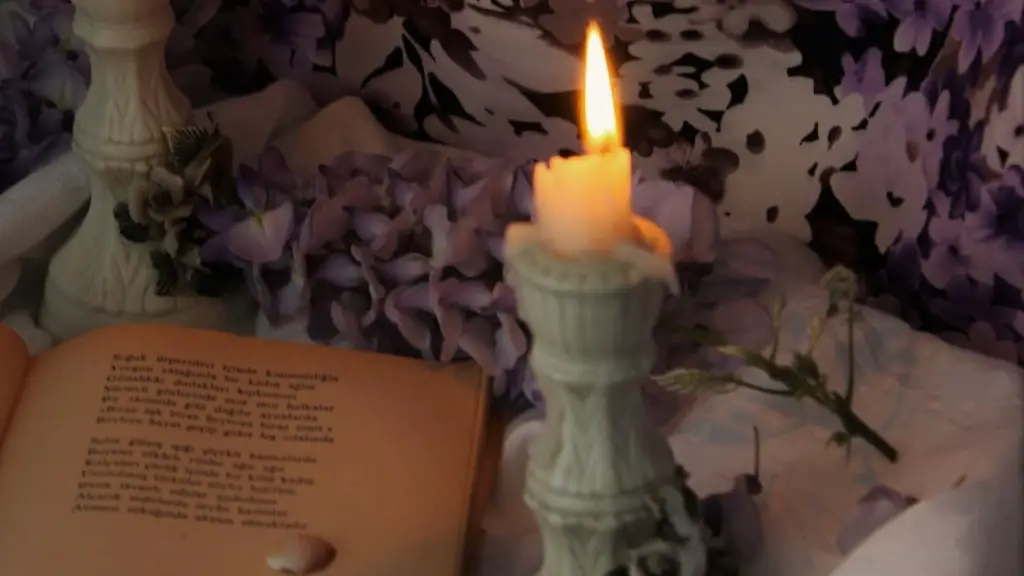Metaphysical poetry, in English literature, is a poetic form that flourished in the seventeenth-century, particularly during the years of John Donne, George Herbert, and Andrew Marvell. It was marked by a unique blend of religious, philosophical, and scientific themes, often composed in complex language and structure. The term has been used in various contexts since the eighteenth-century but has seen a resurgence in appreciation since the mid-twentieth century. Its poetic quality has become popular in modern times, inviting fresh interpretations and often appearing in anthologies of English poetry.
Metaphysical poetry is an intellectual and philosophical form of poetry, full of witty and imaginative analogies, exploring the spiritual, religious, and scientific realms. These poets had a particular “metaphysical” outlook which derived from their philosophical beliefs and ecclesiastical viewpoint. Complex metaphors, ethical conundrums, along with inquiries surrounding the core nature of humans, often formed the cornerstone of the poetry. Along with their elaborate imagery, metaphysical poets explored themes of sin, grace, judgement, and redemption.
John Donne often seized readers attention in a variety of ways, often with striking and evocative language, as well as cleverly constructed satirical and persuasive metaphors. In his poem ‘The Good–Morrow’, Donne challenges the need for any form of material wants and unceasing pursuit of ambition, instead exploring the topic of contentment; his poem ‘The Sun Rising’ captures the sublime intimacy between two lovers. George Herbert explored faith, prayer, and spirituality with precision in poems such as ‘The Collar’, ‘Easter Wings’, ‘Redemption’, and ‘The Sacrifice’. Andrew Marvell focussed on the political and cultural ambitions of his time while also delving into poetry of longing and love, as he did in his famous poem ‘To His Coy Mistress’.
The poetic form has been the subject of numerous studies attempting to pinpoint its distinguishing features. Some of the core distinctive elements, familiar to readers of metaphysical poetry, are antithesis and “divided line” of thought, strong imagery and symbolism, paradox, philosophical argument, pun and extended metaphor, encomiastic presentation, and, in some cases, satire. This firm grounding in the structure of thought, as well as its general structure and arrangement, are what elevates metaphysical poetry to a uniquely erudite and literary style.
Metaphysical poetry is, thus, filled with elaborate constructions of meaning and intellectual complexity. The resulting poetry is often engaging and thought-provoking: providing moments for both reflection and appreciation of the poet’s own creativity. Although metaphysical poetry is considered radical and aesthetically influential, its lasting contribution to literature lies in its continued capacity to evoke emotion, as well as its unique structure of thought. As these “metaphysical” poets would have asserted, no matter a person’s leaning, the exploration of the soul and of the intellect, through poetics and through verse, is an ongoing journey, with much to be gained by introducing fiction or factual argument into our understanding of the cosmos.
Questions of Meaning
John Donne’s ‘A Valediction Forbidding Mourning’ is an example of a metaphysical poem that is known for its complex metaphors and metaphysical conceit. In the poem, Donne uses a series of contradictory comparisons to demonstrate both the severity and tenderness of love. He compares the couple to a compass whose distance from one another can’t be felt, as well as a fleet of ships that will part, but also stay with one another in spirit. Donne is asking the reader to consider how contradictions can exist in love: how love can both separate and bring together two people, how two individuals can remain connected despite physical distances.
Donne’s metaphor of intertwined lines to describe the strength of life partner-ship is also relevant in Andrew Marvell’s poem A Dialogue Between The Soul and Body. Marvell explains that the soul and body cannot be separated and that the only thing that will ultimately separate them is death. This idea is repeated in a number of other metaphysical poems: that human existence is full of paradoxes and that understanding the meaning of life requires a deeper consideration. Donne and Marvell’s poems thus explore questions of the soul and body, the self and the world, and the struggle between will and emotions, offering readers a deeper understanding and connection to these contemplations.
Exploring the Universe Anne Finch Presents
Anne Finch, often known as Countess of Winchilsea, is perhaps the most recognised female metaphysical poet, though she is often overlooked. Finch’s poetic works, often written under pseudonyms, were typically structured in the manner of her male contemporaries. At the same time, however, her works adapted elements of the metaphysical style for a more characteristic poetic measure. Rather than addressing religion and life philosophies alone, Finch’s works often explore natural and scientific aspects of the universe. Finch’s poems, such as ‘Tirzah’, display her attention to cosmological and astronomical events, going beyond deep and philosophical themes in favour of describing and detailing various features of the cosmos.
Further, Finch often employed metaphors and similes to convey her thoughts on the universe, such as in her ‘Address to the Sun’: “As when a ray of rising sun, / Breaks thro’ some cloud, and glances o’er the skie, / Rose tones, and scatter’d rubies seem to run / O’re every mountain top, and hill, that lye.” Finch looks beyond the metaphysical aspect of being to characterise and describe objects in her environment. In this way, Finch’s works bridge the gap between natural and metaphysical poetry and create a unique style all her own that underscores a strong sense of connection between the individual and the universe.
In her poem ‘Grand Conversation,’ which Finch wrote in response to Pope’s ‘Essay on Man’ and Milton’s ‘Works’, Finch crafts a metaphysical poem that is far removed from the intellect of her peers. Rather, she takes an image of a praying mantis in order to crystallise her thoughts on mortality and the meaning of life. In doing so, Finch incorporates both a scientific, keen understanding of the creature alongside a broader sentiment of mortality, a classic feature of metaphysical poetry, in ways that are unlike those of her male predecessors.
Alternatives to the Standard View
Metaphysical poetry has often been perceived as a somewhat conservative form, given its focus on Christian doctrine and its adoption of a stylistic set of prescribed rules. Feminist readings, however, have highlighted the fact that many metaphysical poets such as Anne Finch provided a more nuanced, progressive view of the world. Though Finch associated herself with the established groups of metaphysical poets by borrowing both their form and their vocabularies, her works often explore ideas and provide critiques that are uniquely her own. Through her use of elaborate poetic forms and intricate imagery, Finch often employed progressive ideas that rejected the masculine and patriarchal thinking found so frequently in work of her contemporaries.
Finch’s ‘The Introduction’, a poem that expresses her views on women’s lack of agency, demonstrates her desire to breach a conservative mindset. Similarly, ‘The Spleen’ offers a rebellious and uncompromising attitude to her areas of discontent, while ‘A Nocturnal Reverie’ presents a brief moment of stillness within which Finch explores her innermost thoughts and concerns. In this way, readers can see the complexities of Finch’s work, along with the substance and importance her works adds to the genre of metaphysical poetry.
The Aftermath of Controversy
In the early years of metaphysical poetry much of Donne and Herbert’s works often dealt with controversial religious topics, with many questioning the orthodoxy of such portrayals. Although Marvell’s works were generally more religiously orthodox than either Donne’s or Herbert’s, his own works also drew criticism for his frequent irony and criticism of Church policy. Marvell’s works often exhibited a different tone than that of his contemporaries, hinting at a more modernised sensibility and voicing a desire for change in doctrinal practice. His works often adhered to a much more secular view, a stance that was frequently at odds with the existing religious orthodoxy. Ultimately, Marvell’s works, like those of the other metaphysical poets, opened new possibilities in literature, creating a more modern style of poetry and igniting a conversation of reform in an often conservative world.
Modern Readings of Metaphysical Poetry
Metaphysical poetry, as a genre, has both benefited from, and suffered for its progressive inclinations. Yet, over the past century, contemporary writers and readers have begun to recognise it as a vital component to many of the most popular strands of literature. This is not to say that metaphysical poetry has been without its detractors. The fact remains, however, that it successfully facilitated an era of cross-disciplinary exploration and opened up readers to non-standard interpretations. Thus, readers and writers today are presented with a much fuller, more complete understanding of metaphysical poetry, one that provides alternative and novel views of the world.
The notion of exploring alternative perspectives served as a constant theme throughout the works of metaphysical poets, and this aspect remains particularly relevant in the twenty-first century. To that end, writers, both experienced and new, are turning to metaphysical poetry in order to explore their own thoughts and views of the world. As such, metaphysical poetry has been able to transcend its original platform as a form of religious or spiritual poetry, and has become a mainstay of literary culture, reigning as a stand-alone literary movement, a lasting inspiration, and a source of perpetual exploration no matter where one stands.
The Power of Poetics in Art
Metaphysical poetry’s devotion to form and structure helped, in part, to differentiate the poetic works of Donne and his contemporaries from their predecessors: the works of Chaucer, for example, often adhered to more standard, traditional measurements. But the wide-ranging scope of topics made metaphysical poetry completely unique. For example, the works of the metaphysical poet William Habbington often addressed the ostensibly complex topic of calculus, a type of mathematics in which Habbington had a great interest. Habbington often wrote of mathematics through his use of verse, introducing this complicated subject to broader readership in a more digestible manner.
Further, when Habbington chose direct language, such as in his poem ‘On Euclid’, any reader who had only a basic understanding of mathematics could still appreciate the poetics of the piece. Moreover, Habbington’s poetic achievement lies in his success in drawing out of those complex equations something for everyone to appreciate. In this way, metaphysical poetry, like Habbington’s writings, encourages writers and readers alike to explore their own complexity, to think and to consider, and to embrace the power of poetics in art.
The Impact of Metaphysics on Thought
John Donne’s poems challenge readers to think more deeply about the ideas of mortality, sin, faith, and redemption. His works also emphasise the importance of free will and the individual’s right to make their own choices. Donne’s poem ‘A Valediction: of Weeping’, offers a lesson of reconciliation, while ‘The Relic’ delves into the combined forces of body and soul that make up our being. Similarly, George Herbert explores the power of the divine in pieces such as ‘Easter Wings’. In this work he allows readers to engage with faith, exploring the ideas of mercy, grace, judgement, atonement, and the level of devotion religious belief can provoke.
The writings of Marvell, as with those of Donne, similarly discussed controversial topics such as government, technology, and society, but from a more secular perspective. His works consider how individuals interact with one another, as well as their interactions with the government, technology, and their own surroundings. His poem ‘The Coronet’ is an eloquent yet realistic reflection on the restrictions placed on those that Chose to live outside religious and societal norms. Through his poetics and profound metaphors, Marvell’s writings emphasised the power of free will and thought, allowing readers to explore aspects of their own humanity in a theological context.
The Relevance of Metaphysical Poetry





